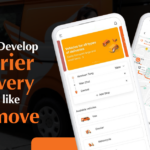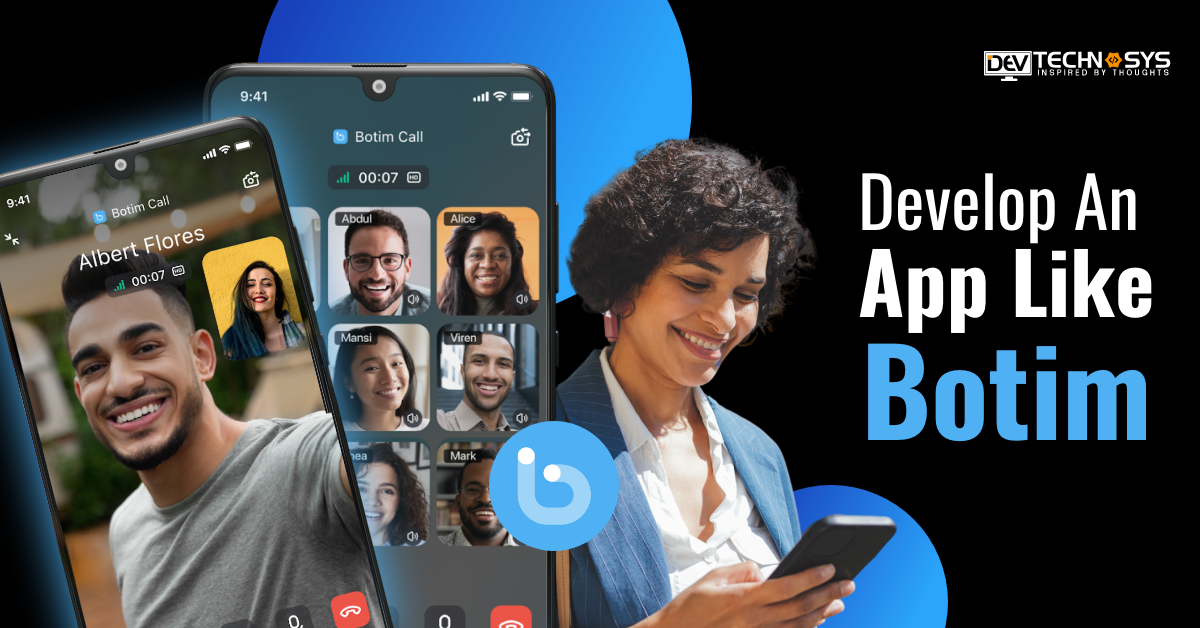Mobile apps have always been a powerful medium to fight with market competition. The businesses are optimizing their apps and devising the strategies better than the existing one. Despite the business efforts and all the marketing efforts, stills the cost gives hiccups to most of the business owners. For the stakeholders who see the native apps as less performing and time-consuming, PWA is the easy option.
From the developer’s perspective, the HTML, CSS, and Javascript are the traditional languages for web development. If you say these languages are not sufficient for the mobile application development that would be a lie.
Today, you just need to have knowledge of HTML, Javascript, and CSS and you are ready to go. Yes, yes, PWA has made it possible to have our cross platform app developed without knocking your head with hard technical languages. Before understanding what is PWA and how does it work, let’s understand what is cross platform app?
Table of Contents
What is a Cross Platform App Development?
Cross-platform app development is the process of developing mobile applications that can operate without a hitch across a variety of platforms and operating systems, including iOS, Android, and Windows, all from a single codebase. Developers can save time and work by using this method to write the code just once and deploy it to a variety of platforms.
React Native, Flutter, and Xamarin are a few examples of frameworks that developers may utilise to build native-like apps that provide consistent user experiences across a variety of platforms.
Without sacrificing app performance or functionality, cross-platform app development speeds up the development process, lowers costs, and enables businesses to access a wider audience.
What are Progressive Web Apps?
For progressive web apps, no need to learn the native languages such as Java, or Objective C. The progressive web apps can be developed and distributed without giving any concern to the play store and app store guidelines.
In addition, the updates are not tough and can easily be distributed. If you are a custom mobile application Development Company, certainly you might have the experience of the troubles caused by the guidelines of the App Store.
The progressive web app development company uses a mobile app development technique that is used in building the app which gives the feel and looks like the native app.

Using the web development stack of HTML, CSS, and Javascript, the progressive web apps offer rich functionality and the optimum user experience which are usually felt with the native apps.
Simply speaking the progressive web apps are the web apps with native features. The user can access the app with an icon in a similar way, the native apps are accessed.
A most reliable company in the internet world Google first used the approach in 2015. Since then, the technique became a hot topic for debates and effective medium for user engagement.
What are the Features of PWA?
Progressive web apps consist of many features which make them stand in front of traditional web and native apps and also the same are the reason for the increasing demand for hire web app developer.
- Full responsive and browser compatibility
- Connection
- App interface
- Push notification
- Updates
- Safety
- Easy installation
i. Full Responsive and Browser Compatibility
The apps are built with the progressive enhancement method. The progressive enhancement is too popular now and this is the strategy of app development for providing the functionality to every user irrespective of the browser.
The focus is more on delivering sophisticated web pages. These web page versions are delivered the way; the browser can support them in a better way.
PWA apps work with every browser and are compatible with all screen sizes and specs. The PWA app looks the same over mobile and tablet, also can be adjusted over desktop.
ii. Connection
The progressive web apps are built to work in low connectivity. The data is cached once and then can be fetched with a low connection. Unlike native apps, every time the high-speed connection is not used. The app can be used even if the connection is not there. For educational apps, PWAs are highly famous.
iii. App Interface
The app interface is similar to the native app. The navigation is similar and the app interacts like native ones
iv. Push Notification
Almost every native app uses push notification for communicating the users and keeping them engaged. Push notifications are also available for the PWAs and work in a similar fashion. Push notification is the part of marketing strategy, keep the customer interested in the app and motivate them to use the app.
v. Updates
Updates have always been a sensitive issue with the native app. be it android or iOS, both are hard with the updates of the app. Once the developers are done with the technical tweaks, these updates are then launched over the respective app store.
The updates then can be downloaded and installed by the users. PWA does not require any update and need not be installed. The updates made over the content can be directly reached by the apps.
vi. Safety
SSL encryption is the safety mechanism most prevalent today. Google is pushing the security concerns and therefore PWA apps are reached with the HTTPS encryption. The unauthorized user cannot reach the app. This way, PWA keeps safety first.
vii. Easy Installation
The search engines such as Google, Yahoo, etc, consider PWAs as the application. These apps are not distributed via app stores. The apps are shared through the URL and therefore can be found easily. The installation is not the long process and adding to the home screen option is available.
Let’s look at some additional features for making the effective comparison of apps with native and standard web app from the custom application development perspective.
Progressive web apps inherit the functionality from native apps and web apps. The apps can be used regardless of the underlying operating system. In addition, the app works superb, like these are developed for the specific device.
The apps are getting famous due to the automatic update feature, slow network functionality and enhanced user experience along with ease.
How to build a Progressive Web App?
Google has published a checklist of items for Progressive Web apps. I will go over a few minimum requirements for an application to be a PWA:
- Web app manifest
- Service worker
- Push notification
- Synchronization
- Shell architecture
- Transport layer Security
i. Web App Manifest
Web app manifest is the JSON file that is the first component giving the PWA app native-like interface. The manifest JSON file controls the way apps appear to the user. Also for making the native-like appearance, the PWA app can be displayed without a URL bar. The file allows the developer for storing the web app metadata over the centralized database.
Through manifest JSON file, the starting URL, App name, icon size, icon type, and location can be controlled. The developer can define the splash screen and theme for the address bar.
For implementing the setting, the developer only needs to add the single link to manifest, between the HTML codes of all web pages. Going more technical deep, you can find the link under the script tag of the HTML head tag.
ii. Service Worker
The Service worker manages background synchronization, offline working mode and pushes notification. The service worker is the technical element, which supports the main features of PWA.
The service worker is the Javascript file that runs separates from a web page or web app. The service worker is responsible for responding to the user interaction, and the network requests made by the app. The service worker runs only for a specific event and action stays alive for a very short time.
iii. Offline Working Mode
Hiring a web app developer is necessary for PWA development. There is another feature, which is supported by the Service Worker. The Service Worker makes the app capable to work in a low network and load it instantly.
The application shell is cached which makes the app load fast; whereas the dynamic content is loaded and refreshed as the connection is gained. The complicated components such as message history, payment history, shopping cart, and avatars are made possible with the Service worker. The mechanism allows for decent app performance and improved UX.
For example, the user-using messenger sees no difference between the online and offline modes of user -interface. The message history stays available and the messaging requires the connection just like connection.
iv. Push Notification
Push notifications are not a new thing for PWA developers. They generally need to put this function on every next project. Almost every app uses push notification to keep users engaged.
Push notifications are used by PWA for user engagement. Push notifications mean the prompt updates over the user screen. Users see the popup over their screen and if he finds the popup interesting, he opens the app, which increases the usability.
v. Synchronization
Service Worker component is responsible for the app working when the data connection is lost. The Service Worker delays the action until the connection is restored.
For the chat and messaging functions, the messages sent will be marked as delivered. As the data connection is restored, the messages are sent. The server sends the periodic update for the app, which updates the app.
vi. Shell Architecture
The architecture of the PWA separates the static content from the dynamic content. This makes use of Application Shell Architecture, which is the base of User Interface and the only approach for the development.
The app shell includes the core design elements, which run the application without a connection. The app shell works well for single page Javascript heavy applications and apps with stable navigation.
vii. Transport Layer Security
PWA mobile app development company utilizes the TLS protocol, which is the secure and robust data exchange standard for two applications. The data integrity and security are important, therefore serving the website needs to have an SSL certificate and HTTPS.
What are the Pros of PWA?
- Development saving
- Installation friction is over
- Updates are easy
i. Development Saving
PWA development is more cost-efficient. The PWA developers use web stack for the development, which makes them useless time and effort. The reason is that the developer needs not to build a different app for different platforms. The single PWA can work well over android and iOS. The same app fits over various devices.
ii. Installation Friction is Over
What makes the PWA competitive is the discoverability. The PWA needs not to be searched over the App Store and installed. Each step to download a native app reduces the number of users with 20 percent.
PWAs are not installed over the device through the play store. PWA users can find the app without accepting various permission. A user just needs to visit the app and add to the home screen. And it is done.
iii. Updates are Easy
An update is not required for the PWAs and if required they are not done in the traditional way. PWA users do not have to worry about the app store, surfing, and installation.
Each time the developer releases a new version, the user can get immediate access to updates. This feature saves from the long-running problems and saves from the risk of losing data.
Cost to Develop Progressive Web App
The cost for creating a Progressive Web App (PWA) varies based on criteria such as complexity, features, and the hourly rates of the development team. A simple PWA may typically cost between $8,000 and $15,000, whereas more complex PWAs with extra functions can cost between $15,000 and $25,000.
It is critical to consider continuous maintenance and updates, which might increase the overall cost. Hiring experienced developers may increase the initial cost, but it will result in a higher-quality product. Finally, discussing project details with development organizations or freelancers will result in a more realistic cost estimate.
Conclusion
Alongside this, high user engagement is another benefit noted. Around 80 percent of the app users love to move the app to the home screen. Also, the frequency of use, prompt access and simplicity are also benefited for PWA.
With the distribution of PWAs, the conversion rates have risen to 104 percent and the users have noted to spend 74 percent more time over the pages. Among the famous Progressive web app development, The Washington Post, Shopify, and Twitter are famous.

























